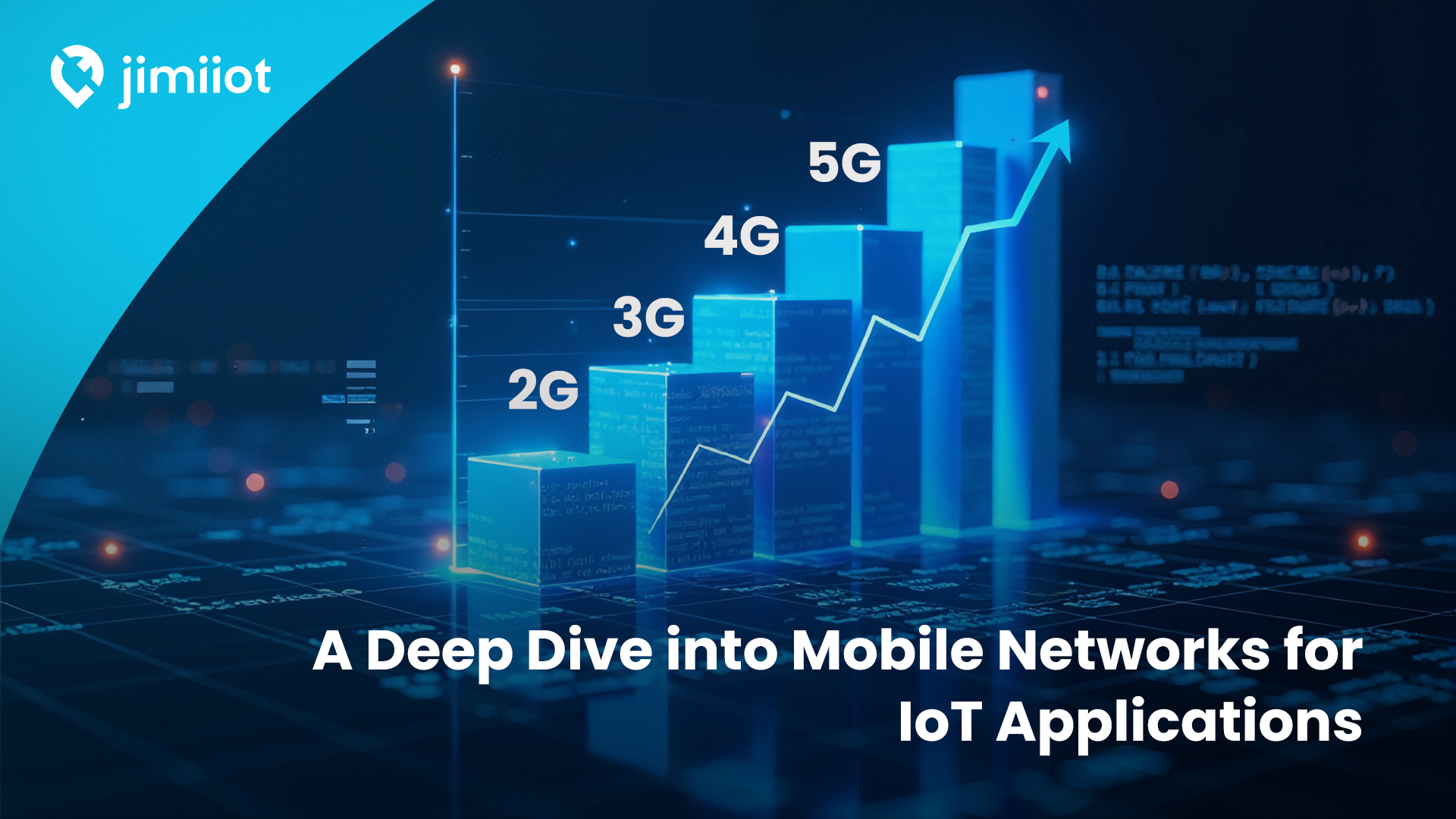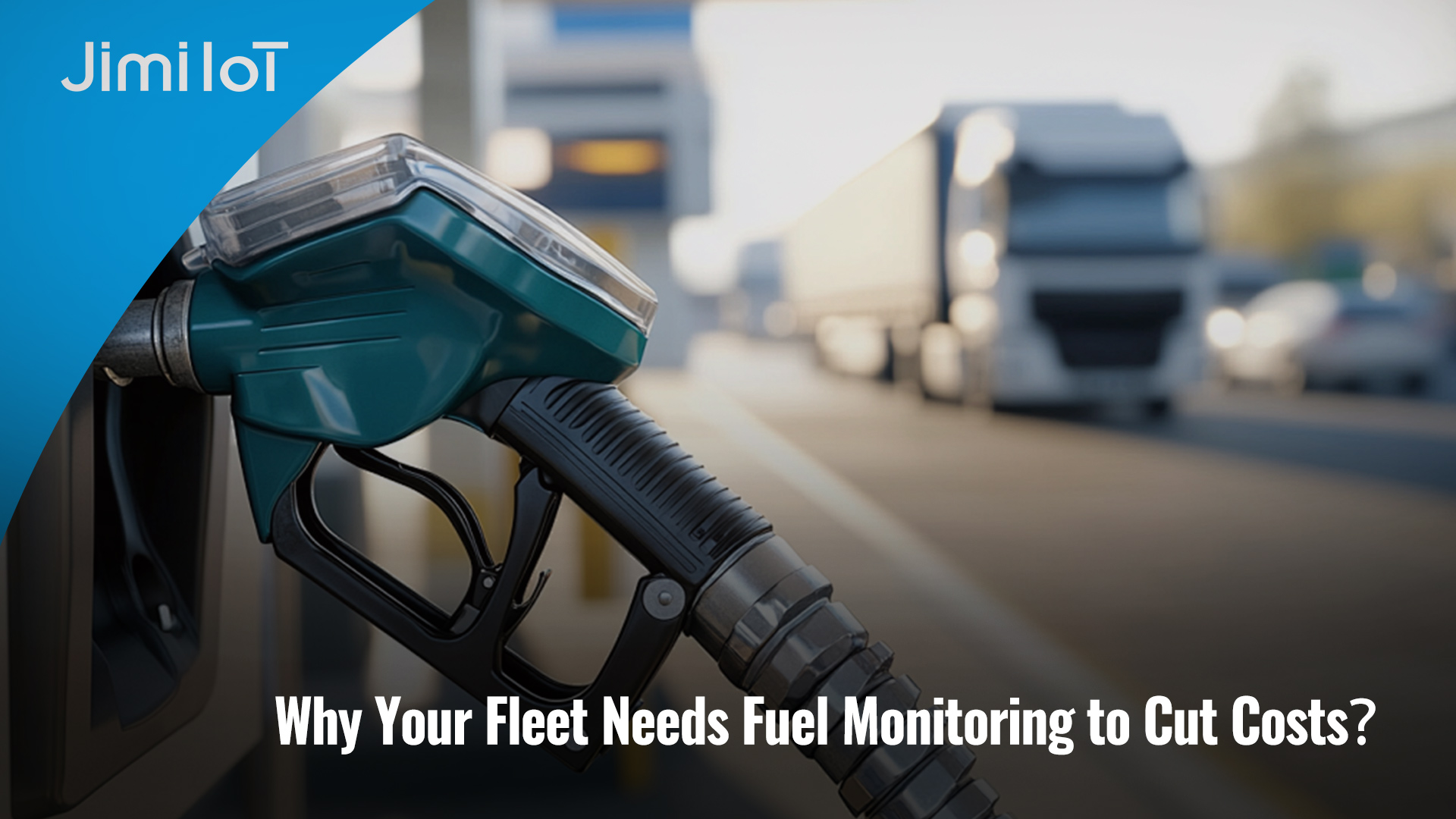
GPS and GNSS tracking systems have revolutionized how we monitor vehicles, assets, and shipments. But the backbone of their real-time capabilities lies in mobile networks—2G, 3G, 4G, 5G, and LPWAN (Low Power Wide Area Network). These technologies enable seamless data transmission from tracking devices to cloud platforms or applications.
In this article, we’ll examine the technical differences between these network generations and how each supports GPS tracking in real-world applications like fleet management, rental cars, cold chains, and more.
1. Comparing Mobile Network Generations: 2G, 3G, 4G, 5G, and LPWAN
These mobile networks for IoT differ significantly in speed, power usage, and coverage.
2G: The Digital Pioneer
The second generation (2G) marked the transition from analog to digital cellular communication. Built on GSM and CDMA technologies, 2G networks offered basic data capabilities (up to 1 Mbps). Though reliable, they’re slow by modern standards and gradually being phased out globally.
Key Features:
- Digital signal transmission
- Speeds between 50 Kbps to 1 Mbps
- Limited data capacity
3G: Speed and Technology Upgrade
With the introduction of UMTS (Universal Mobile Telecommunications System), 3G enhanced data speeds and enabled mobile internet usage.
Key Features:
- Better performance over 2G
- Higher speeds (up to several Mbps)
- Requires denser base station networks (increased cost)
4G: High-Speed Connectivity with LTE
4G ushered in a new era of mobile communication using LTE (Long-Term Evolution). It supports real-time tracking and video streaming.
Key Features:
- Speeds: 100 Mbps to 1 Gbps
- Low latency (<100 ms)
- High power consumption and data usage
5G: Ultra-High-Speed & Low Latency
Still in its rollout phase globally, 5G promises speeds up to 35 Gbps and latency under 1 ms. However, it faces coverage and signal obstruction challenges.
Key Features:
- Exceptional speed and capacity
- Ideal for urban, high-density areas
- Limited range and weaker penetration
LPWAN: Optimized for IoT
Low Power Wide Area Networks (LPWAN) are tailored for IoT devices requiring long battery life and low data transmission.
There are two main LPWAN categories:
a. Licensed LPWAN (e.g., LTE-M, NB-IoT):
Uses existing cellular infrastructure with dedicated frequency bands, offering robust coverage and security.
b. Unlicensed LPWAN (e.g., LoRa, Sigfox):
Operates in unlicensed bands with ultra-narrowband signals for long-range, low-power communication.
Sub-technologies include:
- Spread Spectrum – Spreads narrow signals across wide frequencies to improve resistance to interference.
- Telegram Splitting – Breaks transmissions into smaller packets to minimize interference and collisions.
LTE-M (Cat-M1): Bridging LTE and LPWAN
An LTE variant, LTE-M operates on 1.4 MHz and provides mid-range speeds with lower power consumption, ideal for mobile IoT applications.
Key Features:
- 100–300 Kbps (up to 1 Mbps)
- Latency: 10–15 ms
- Supports voice (VoLTE)
- Excellent for GPS tracking
NB-IoT: Narrowband and Efficient
NB-IoT uses just 200 KHz of bandwidth, offering excellent indoor penetration and long battery life.
Key Features:
- Speed: Up to 250 Kbps
- Latency: 1.6–10 seconds
- No roaming (for static deployments)
- Operates in standalone, guard band, or in-band LTE
2. Real-World Applications of Network-Enabled GPS Tracking
Fleet Management
In modern fleet operations, tracking devices combine GNSS and cellular networks to deliver real-time insights. IoT-based telematics allow managers to monitor:
- Vehicle location and routes
- Driver behavior and performance
- Compliance with safety regulations
- Fuel consumption and maintenance needs
Reliable mobile connectivity ensures uninterrupted data flow, enabling proactive decisions.
Rental Car Management
Rental companies use GPS trackers with mobile connectivity to:
- Monitor vehicle locations
- Receive alerts in case of accidents or misuse
- Remotely disable ignition in case of theft
- Track mileage and usage history
LPWAN and LTE-M provide cost-effective solutions with extended battery life for infrequently used vehicles.
Cold Chain Monitoring
In temperature-sensitive industries, cellular IoT trackers equipped with wired sensors help:
- Monitor ambient temperature and humidity
- Track door openings or unauthorized access
- Send real-time alerts during anomalies
- Provide historical reports for compliance
LPWAN or NB-IoT technologies are ideal here due to their long battery life and reliable transmission over long distances.
Asset & Container Tracking
For long-haul shipments or static assets, GNSS trackers with NB-IoT or unlicensed LPWAN:
- Offer geolocation with minimal power consumption
- Work well in remote or indoor locations
- Enable movement-based alerts or tampering detection
These are often used in logistics, agriculture, construction, and mining.
3. How to Choose the Right Network for GPS Tracking
Selecting the ideal network depends on your specific use case. Here are seven key factors to consider:
- Coverage Area – Is your application urban, rural, or global?
- Data Needs – Do you require high-speed, frequent data, or occasional updates?
- Mobility – Will the device move frequently or stay static?
- Power Constraints – Is long battery life critical?
- Latency Tolerance – Do you need instant updates or are delays acceptable?
- Roaming Requirements – Will your device operate across regions or countries?
- Cost – Consider both the network plan and hardware pricing.
Conclusion
From 2G to 5G and LPWAN technologies, mobile networks play a vital role in enabling GPS/GNSS tracking across various industries. Each network offers a unique balance of speed, power, and coverage. Choosing the right one can significantly enhance the efficiency and cost-effectiveness of your tracking solution.
Whether you’re managing a fleet, overseeing cold chain logistics, or tracking assets, understanding the strengths and limitations of these networks ensures smarter, more reliable deployments.
Why JimiIoT
JimiIoT is a global leader in innovative IoT solutions. We provide cutting-edge hardware and software tailored to enhance efficiency and connectivity. Our range of products includes advanced GPS tracking devices, asset management solutions, smart vehicle dashcams, and telematics platforms. With a focus on technological excellence and customer satisfaction, we empower businesses to optimize operations and gain valuable insights from data-driven analytics. Trust JimiIoT to drive positive change and unlock growth opportunities in the digital age.
If you would like more details, please visit Facebook, LinkedIn, INS, and Twitter pages for further information.

 US
US ES
ES PT
PT TH
TH VN
VN JP
JP



